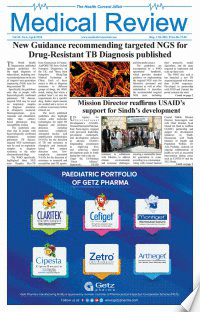In recognition of National Gay Men’s HIV/AIDS Awareness Day, the Centers for Disease Control and Prevention (CDC) confirmed that the daily prescribed use of pre-exposure prophylaxis (PrEP) by people who are HIV-positive and undetectable results in no HIV transmission to HIV negative partners.
“When ART (antiretroviral therapy) results in viral suppression, defined as less than 200 copies/ml or undetectable levels, it prevents sexual HIV transmission,” write Dr. Eugene McCray, Director?of the Division of HIV/AIDS Prevention?at the CDC’s National Center for HIV/AIDS, Viral Hepatitis, STD, and TB Prevention, and Dr. Jonathan H. Mermin, Assistant Surgeon General and the National Center’s director.
“Across three different studies, including thousands of couples and many thousand acts of sex without a condom or pre-exposure prophylaxis (PrEP), no HIV transmissions to an HIV-negative partner were observed when the HIV-positive person was virally suppressed. This means that people who take ART daily as prescribed and achieve and maintain an undetectable viral load have effectively no risk of sexually transmitting the virus to an HIV-negative partner, McCray and Mermin write.
The CDC letter could have important political implications as Congress considers funding for federal agencies working on HIV/AIDS and for state and local legislators debating archaic HIV criminalization laws in light of new scientific evidence.
“This is the moment we have been waiting for! The CDC agreed today there is ‘effectively no risk’ of sexually transmitting HIV when on treatment and undetectable. The overwhelming data clearly shows that taking our medication daily protects our health and our partners,“ Bruce Richman, executive director of the Prevention Access Campaign’s “Undetectable=Untransmittable campaign told HIV Plus magazine. However, he added, “this isn’t advising people with HIV and their partners to abandon condoms or PrEP. Being undetectable is another powerful option in the HIV prevention toolbox to be used in combination with other prevention options or independently depending on the circumstances.”
The CDC reports that more than 26,000 gay and bisexual men tested HIV positive in 2015, two-thirds of all new cases in America. Diagnoses increased among Hispanic/Latino gay and bisexual men from 2010 to 2014, but, after years of increases, diagnoses among African American gay and bisexual men remained stable. HIV diagnoses fell among white gay and bisexual men in the same time period.
The CDC also notes bad news, though not a surprise to longtime HIV/AIDS advocates. “Among gay and bisexual men living with diagnosed HIV, 61% have achieved viral suppression, more than in previous years, but well short of where we want to be,” according to a recent “Morbidity and Mortality Weekly Report.” “More work is needed to close this gap and to address the barriers that make it more difficult for some gay and bisexual men, including African American and Hispanic/Latino men, to get HIV care and treatment. For example, socioeconomic factors such as lower income and educational levels and cultural factors such as stigma and discrimination may affect whether some gay and bisexual men seek and are able to receive HIV treatment and prevention services.”
Indeed, the CDC estimates that more than 1.1 million people in the U.S. are living with HIV today, and 1 in 7 of them don’t know it.
The CDC officials note that “under current cooperative agreements, CDC has awarded at least $330 million per year to health departments for HIV prevention among the most affected populations and is awarding nearly $11 million per year to CBOs to provide HIV testing to young gay and bisexual men of color and transgender youth of color.”
Additionally, the CDC is supporting PrEP and post-exposure prophylaxis (PEP), as well as other prevention efforts. But the current chaos at the Department of Health and Human Services suggests contract and messaging confusion may lie ahead. Worse yet, longtime AIDS journalist Laurie Garrett noted in Foreign Policy last July that “the world cannot treat its way out of AIDS.”
Indeed, Garrett writes that: “without a revolutionary breakthrough in either vaccines or the entire model of HIV control, a massive second global wave of AIDS will come, perhaps within the next 10 years.”
Garrett identifies three problems: “First, new infections increasingly involve forms of the virus that are already resistant to the primary drugs used to treat and prevent HIV infection. Second, the world is fast approaching the limits of manufacturing capacity for anti-HIV first-line drugs, and the ceiling is far lower for second- and third-line treatments. And third, there aren’t sufficient financial resources applied to the AIDS problem now, and signals from major donors — especially the U.S. government — offer a grim future of diminished resources and greater demands on very poor countries to finance their own HIV fights without outside help.”
Before Nov. 8, 2016, many AIDS advocates believed there was a real possibility of ending AIDS in our lifetime. Now, while the science may be there, the political will may not.


